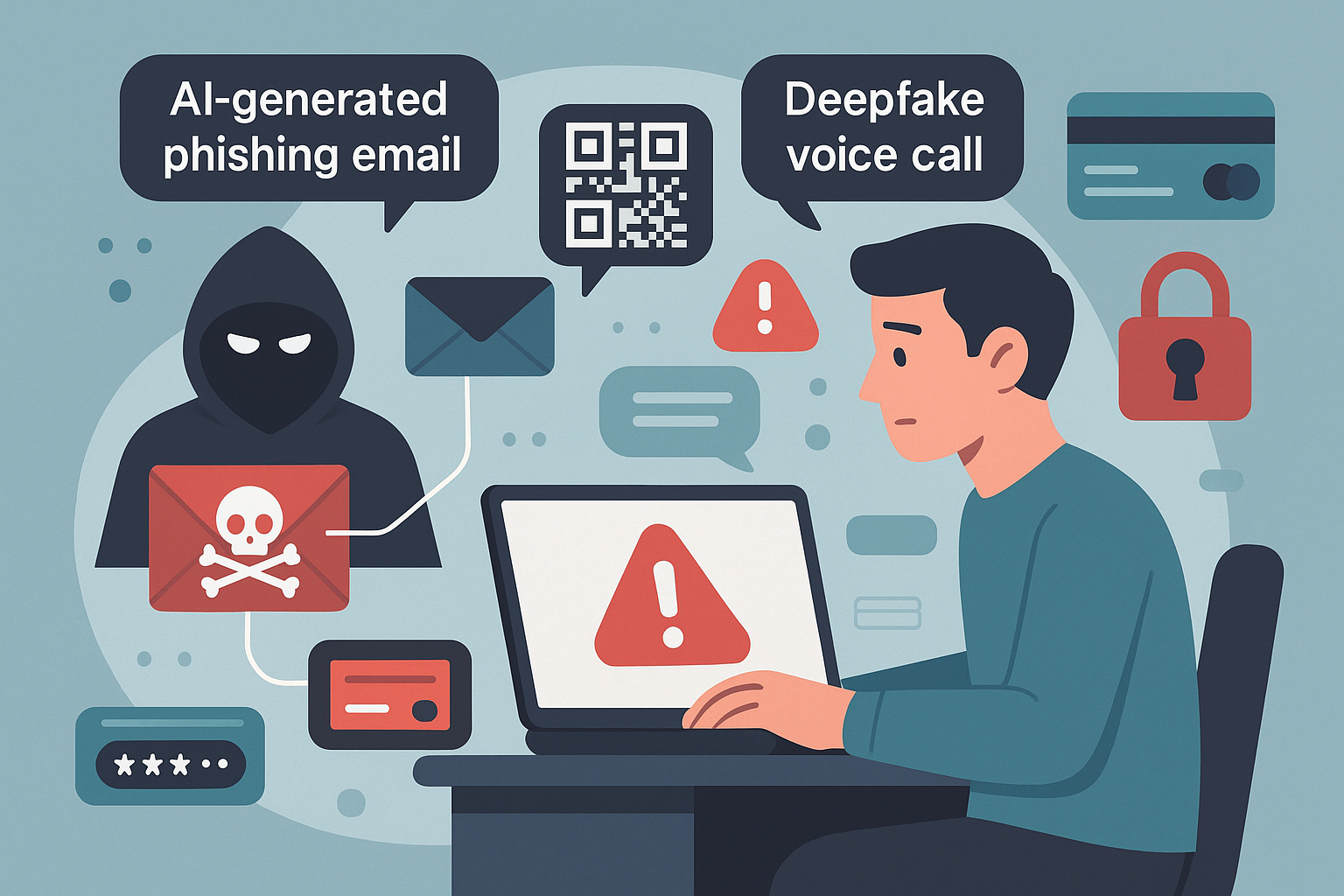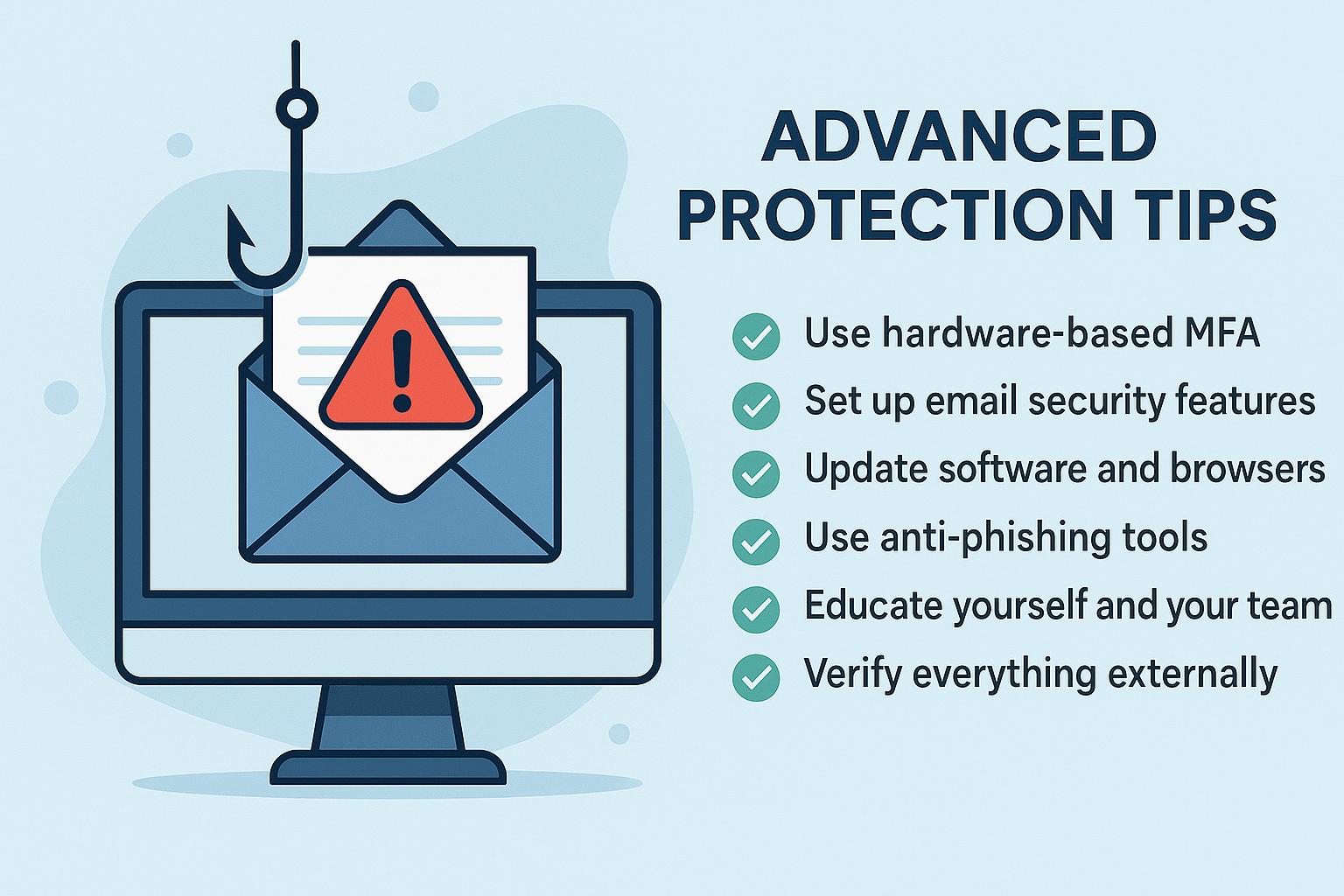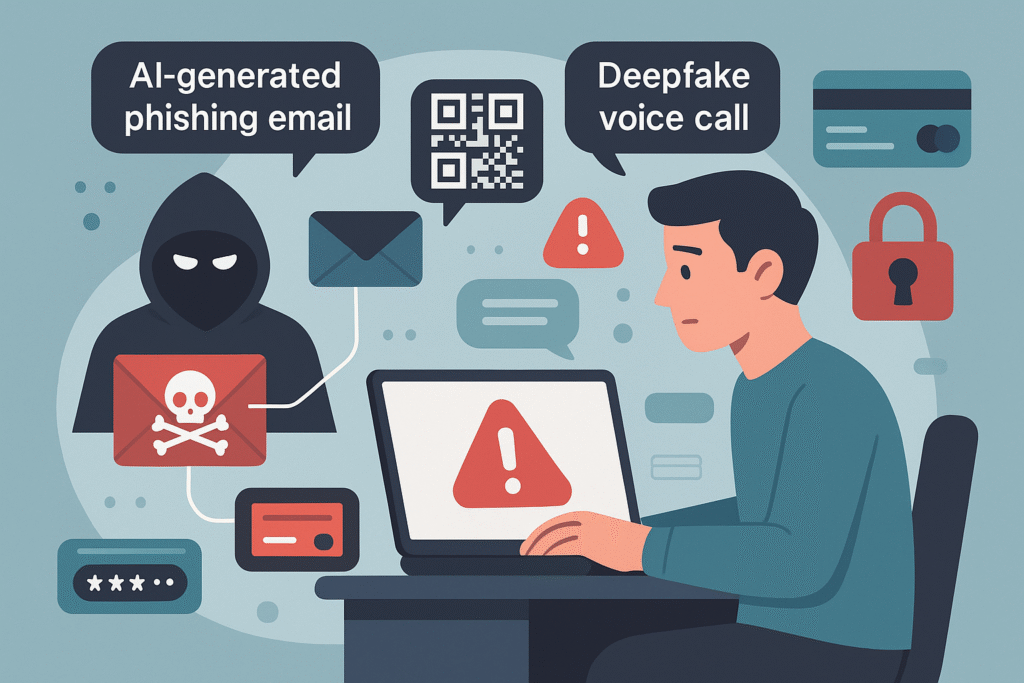
Phishing attacks are getting more sophisticated every year — tricking even smart users into giving away sensitive information.
Whether you’re a tech professional or someone who just checks emails casually, phishing scams can target you.
Learning to spot and avoid them isn’t just smart; it’s essential.
In this guide, we’ll break down everything you need to know in 2025 to stay safe from phishing attacks.
What is Phishing?
Phishing is a cyberattack where scammers pose as legitimate organizations or people to steal your data — like passwords, bank information, or personal details.
It usually happens through email, text messages, websites, and now even AI-generated phone calls and social media DMs.
Latest Phishing Tactics You Should Know (2025 Update)
Phishers are no longer sending those easy-to-spot “You won a million dollars!” emails.
Here are the newest, sneakiest techniques:
- AI-generated phishing emails: AI tools now create flawless, personalized scam emails — no more grammar mistakes!
- QR code phishing (Quishing): Emails and posters with QR codes that lead to fake login pages.
- Deepfake voice calls: Attackers mimic your boss’s or colleague’s voice asking you to urgently transfer money.
- Fake multi-factor authentication (MFA) requests: Hackers send fake “security alerts” asking you to approve a login that’s actually theirs.
- “Reply-chain phishing”: They hijack real email conversations and insert malicious links or attachments mid-thread.
- Smishing and Vishing: Text-based and voice-based phishing attacks are rising through WhatsApp, SMS, and fake phone calls.
How to Recognize a Phishing Attempt
Whether it’s an email, SMS, call, or QR code, here’s what to watch out for:
🔍 Sender details don’t add up:
Always hover over the sender’s name — the real email/domain often reveals the scam.
🔍 Urgent language or emotional pressure:
“Immediate action required!” “Account suspended!” — real organizations don’t pressure you this way.
🔍 Links that look odd:
Check URLs carefully — hackers use similar-looking domains (e.g., amaz0n.com instead of amazon.com).
🔍 Unexpected attachments or QR codes:
Even if it looks like a PDF or Doc from someone you know, confirm first.
🔍 Generic greetings:
“Dear Customer” instead of your actual name is a red flag.
🔍 Too good (or too scary) to be true:
Winning prizes, urgent threats, fake invoices — be skeptical.

Advanced Protection Tips for Techies and Non-Techies
✅ Use hardware-based MFA whenever possible.
Apps like Google Authenticator are good, but physical keys like YubiKey offer even stronger security.
✅ Set up email security features:
Enable DMARC, DKIM, and SPF settings if you manage your own email domain to block spoofing.
✅ Update software and browsers regularly.
Security patches often fix vulnerabilities that phishers exploit.
✅ Use anti-phishing tools and browser extensions:
Extensions like Netcraft, Avast, or Bitdefender can detect phishing sites in real-time.
✅ Educate yourself and your team regularly:
Phishing simulations inside companies help train staff to spot fake emails.
✅ Verify everything externally:
If you receive an odd request from your bank, boss, or coworker — call or message them directly through official channels before acting.
✅ Google suspicious offers or alerts:
If an email claims something unusual, search online — many scams are reported publicly.
What To Do If You Fall for a Phishing Scam
- Change passwords immediately — especially for sensitive accounts.
- Enable 2FA (Two-Factor Authentication) wherever you can.
- Report the phishing email or site — to your email provider, IT team, or authorities.
- Monitor your bank accounts and credit reports for suspicious activity.
- Disconnect from Wi-Fi and run a full system scan if you downloaded a suspicious file.
Final Thoughts: Stay Alert, Stay Safe 🚨
Phishing attacks will continue to evolve — but so can your awareness and defenses.
Building a habit of critical thinking, double-checking links, and verifying requests can save you from becoming a victim.
Whether you’re a techie building secure systems or a non-techie just trying to check your emails, awareness is your best defense.
Stay safe, stay smart!



